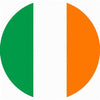Your Cart is Empty
After trying to recalibrate one point, why do all the other points change?
May 26, 2020
The lines emanating from the calibration points are an indication of the calibrated accuracy for the associated region of the screen (shorter lines are better). This is not necessarily an indication of which calibration points should be improved; as you have seen, improving a single point can change the accuracy in other regions of the screen.
The accuracy results show the user which areas of the screen will be more accurate, not necessarily the points where the user needs to improve their calibration.
Ending up with several bad calibration points is common when working with users that have a hard time maintaining gaze fixations for the requisite amount of time during calibration. For these users it is helpful for the facilitator to watch the user's eyes during calibration and make a note of the points for which the user had a hard time maintaining fixation. Those points can then be improved on a second pass, rather than relying on the accuracy display to select points for improvement. Watching the user's eyes during a calibration rather than watching the screen is the best technique when a user is calibrating.
Recent Articles
- What are the system requirements for the PCEye 5? November 05, 2025
- Can I use my PCEye with a Surface Pro? November 05, 2025
- How to unlock the TD Navio with a keyguard installed October 14, 2025
- How do I update iPadOS in my TD Navio, TD Pilot, or Speech Case? September 12, 2025
- What do I do if I forgot my TD Pilot / Speech Case / TD Navio passcode? September 11, 2025
- How can I use iPadOS shortcuts and TD Snap to send a text message? August 22, 2025
- I can connect to other networks, so why can't I connect to this one? August 01, 2025
- Launch Apple Shortcuts from TD Snap® (iPadOS only) version 1.37 and above July 30, 2025
- What is the Self-Service App on my Tobii Dynavox AAC device. SC Tablet, Speech case, Navio and TD Pilot. How to use it. June 26, 2025
- Why is my keyboard typing in all CAPS? May 23, 2025
Also in Support articles
Your opinion matters to us.
Please take a brief survey to help us improve.
Open success Modal












